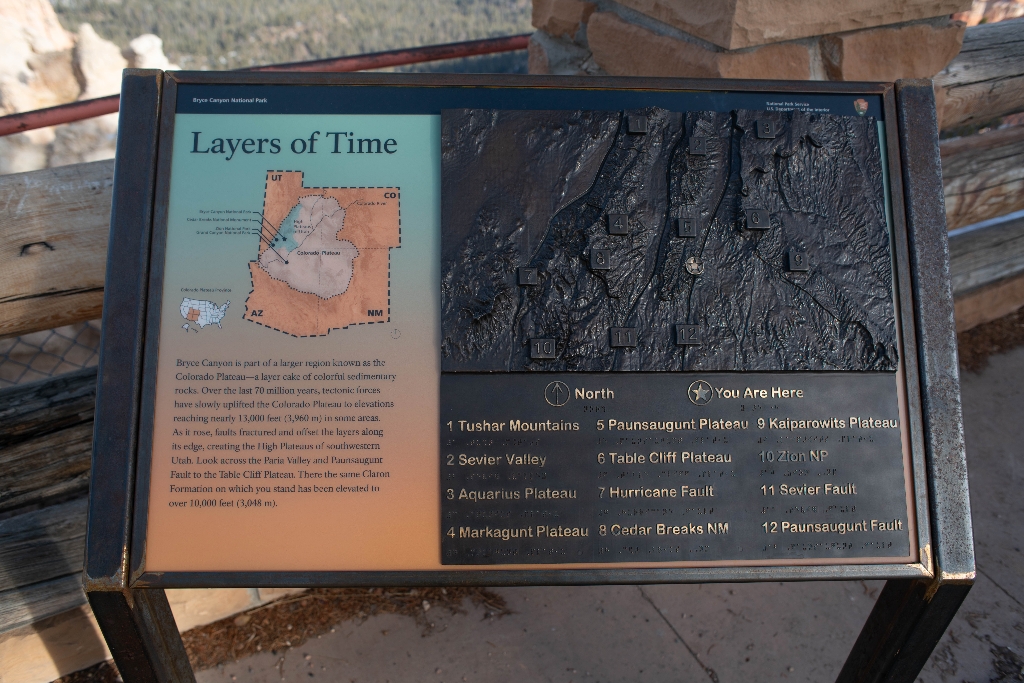
Bryce Canyon is part of a larger region known as the Colorado Plateau--a layer cake of colorful sedimentary rocks. Over the last twenty million years, tectonic forces have slowly uplifted the Colorado Plateau to elevations reaching nearly 13,000 feet (3,960 m) in some areas. As it rose, faults fractured and offset the layers along its edge, creating the High Plateaus of southwestern Utah. Look across the Paria Valley and Paunsaugunt Fault to the Table Cliff Plateau. There the same Claron Formation on which you stand has been elevated to over 10,000 feet (3,048 m).
Is there something we missed for this itinerary?
Itineraries across USA

Acadia

Arches National Park

Badlands

Big Bend

Biscayne

Black Canyon Of The Gunnison

Bryce Canyon

Canyonlands

Capitol Reef

Carlsbad Caverns

Channel Islands

Congaree

Crater Lake

Cuyahoga Valley

Death Valley

Dry Tortugas

Everglades

Gateway Arch

Glacier

Grand Canyon

Grand Teton

Great Basin

Great Smoky Mountains

Guadalupe Mountains

Haleakalā

Hawaiʻi Volcanoes

Hot Springs

Indiana Dunes

Isle Royale

Joshua Tree

Kenai Fjords

Kobuk Valley

Lassen Volcanic

Mammoth Cave

Mesa Verde

Mount Rainier

North Cascades

Olympic

Petrified Forest

Pinnacles

Rocky Mountain

Saguaro

Shenandoah

Theodore Roosevelt

Virgin Islands

Voyageurs

White Sands

Wind Cave

Yellowstone

Yosemite

Zion